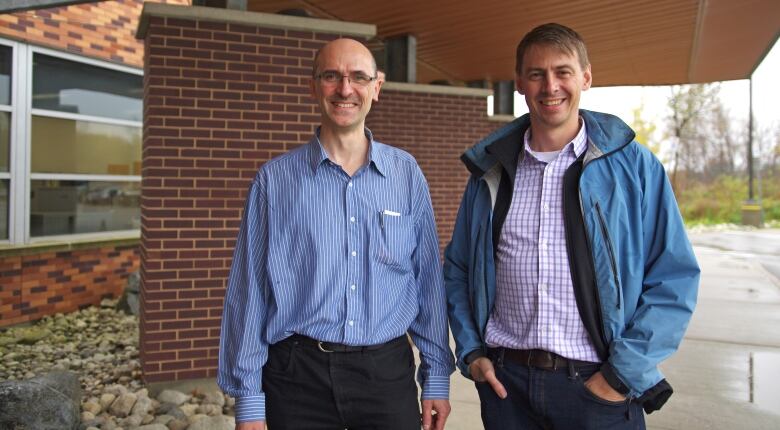Driver's ed, for the car: Autonomoose learns to drive like a human
Researchers program car's brain for unexpected situations but challenges remain

After logging more than 100 kilometres driving on public roads, the University of Waterloo's autonomous car affectionately named the Autonomooseis no mere beginner.
But those who know the car well, including the researchers who are programming its brain, say it still has a lot to learn before it would qualify for adriver's license.
- When cars can drive themselves, who will program their morality?
- How self-driving cars will change your life
"They know lane markings, they know lane widths, they know locations, they know speed limits, they know how stop signs and stoplights work," said Steven Waslander, director of the Waterloo Autonomous Vehicles Laboratory and a professor at both the University of Toronto and the University of Waterloo.
The car has all of this information stored away in a computer in its trunk, but Waslander said there's lots of missing information, such as what to do when the car approachesa broken stoplight.
Still hasa lot to learn
"Everything that is an unexpected occurrence or rare event, we have to program directly into the car," he told CBC News.
"The big challenge and the reason we don't all have self driving cars yet is that we have to build every single one of those scenarios into the software in a way that it can understand.
"As you can imagine, there's just an infinite number of these cases that we have to handle and process and refine and correct."

Here are four more reasons why it could be awhile before your car is driving you to work:
1. Weather sensitivity
It turns out an autonomous car can be like a fair weather friend: it performs best when it's sunny. In rain or snow, its radar and imaging technology can malfunction. The car also tends to stop in heavy rain or snow, because it interprets the dense precipitation as an obstacle in its path.
Waslander said University of Waterloo researchers are making headway on these problems and the Autonomoose can now run reliably in most weather conditions, but still can't handle severe weather.
2. Over-cautious
Autonomous cars can be cautious to a fault. Waslander's colleague Krzysztof Czarnecki, a professor of electrical and computer engineering, told CBC News that for safety reasons they've programmed the Autonomoose to yield to everyone and everything.
"We cannot control other road users, we cannot control the animals that can get on the road, any kind of objects like garbage cans," Czarnecki said.
Only after they've had the chance to introduce the car to all these unexpected elements and program appropriate responses to the elements did Czarnecki say the team would "ramp up the capabilities" of the car and "maybe drive a little more aggressively."
3. Changing lanes
While most autonomous cars are capable of simple lane changes, Czarnecki said manoeuvering lanes in a traffic jam would be "very challenging."
"Certainly our vehicle is not there yet," he said. "As I said, it's very cautious. It's not going to change lanes if it doesn't really have to and if it has to it probably will wait until there's a gap."
4. Courtesy
Driver courtesy such as letting someone merge during a traffic jam or turn onto a busy street is an important and very human part of our road systems, and one that Czarnecki said would be difficult for an autonomous car to learn.
"An autonomous vehicle essentially sees the world as a kind of cartoon," he said. "The cars and pedestrians are just boxes."
In such a world, there are no faces or hand signals nothing that might indicate it is okay to move forward, even though the general rules of the road say otherwise.

In the end, both Czarnecki and Waslander agree that humans are still an important component in an autonomous car.
Depending on where the vehicle is operating, there are laws requiring someone to either be physical behind the wheel or remotely available.
"There's a big gap between what we have now on the roads ... and this full autonomy where a human can simply not pay attention and the cars are so reliable that when there is an emergency they can handle themselves safely," Waslander said.
Hewon't make any predictions as to when that reality arrives, but says researchers are certainly working hard at it.












_(720p).jpg)


 OFFICIAL HD MUSIC VIDEO.jpg)
.jpg)



























































































